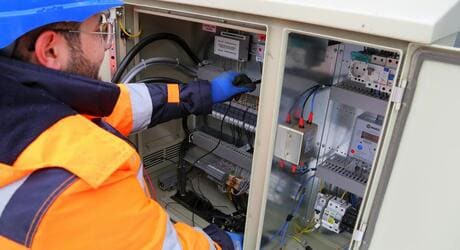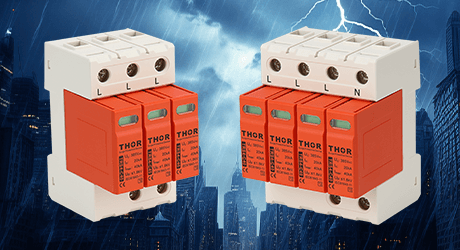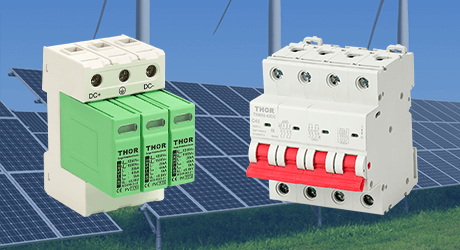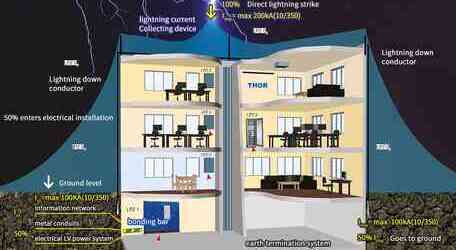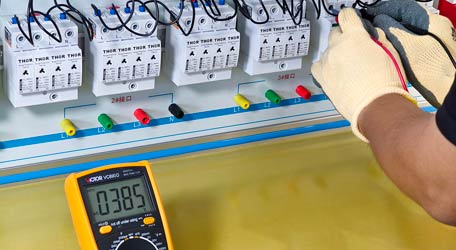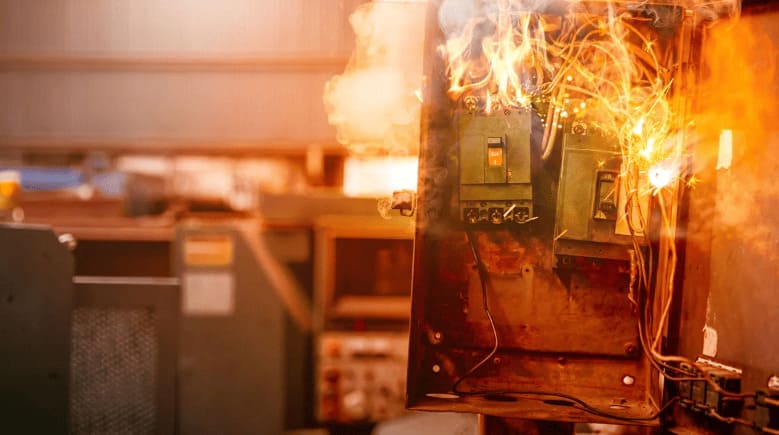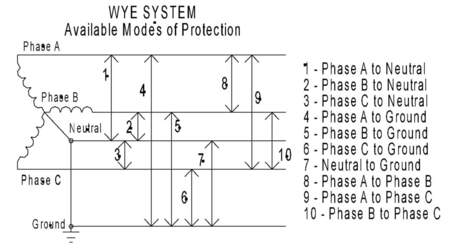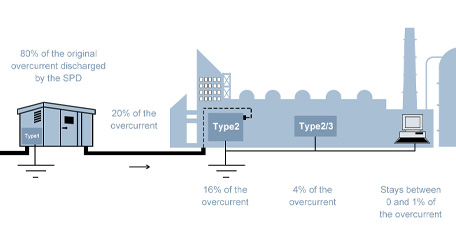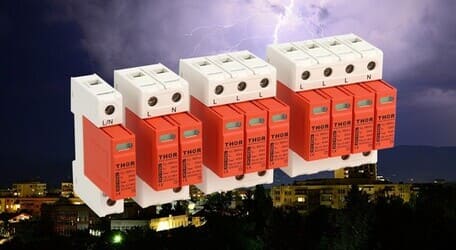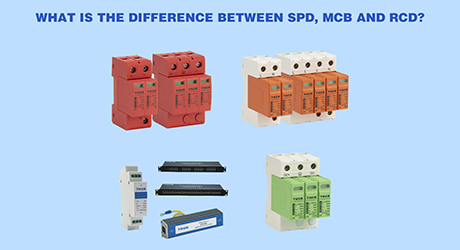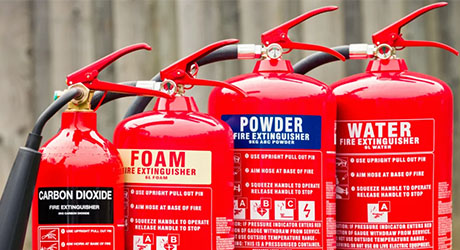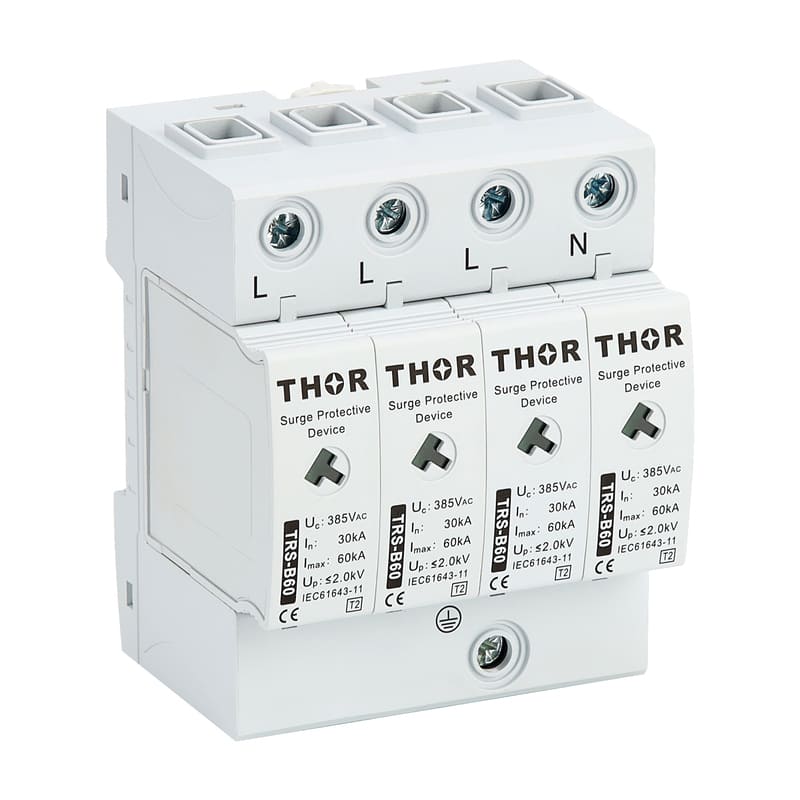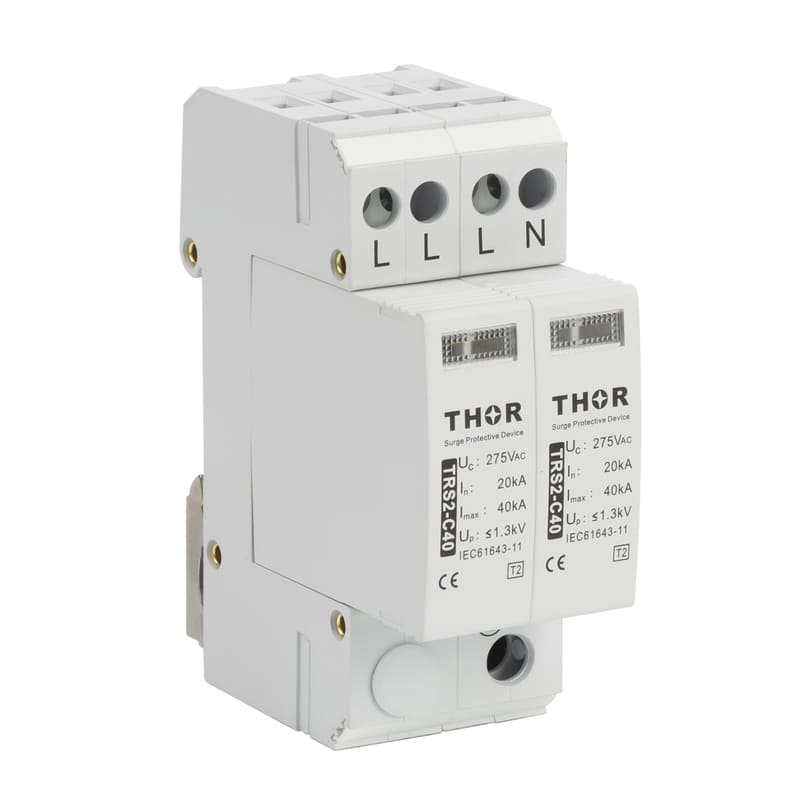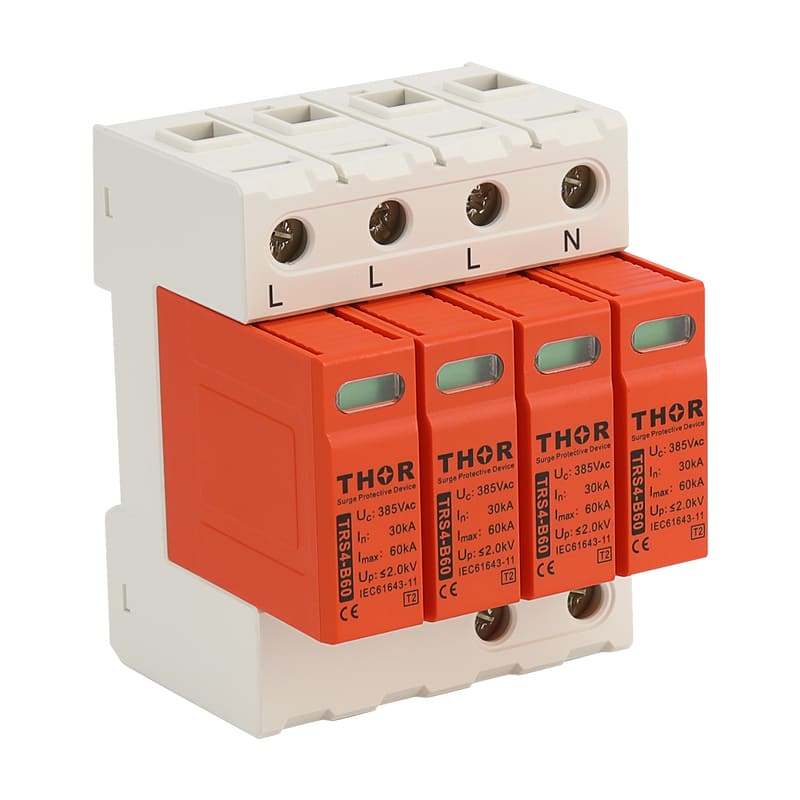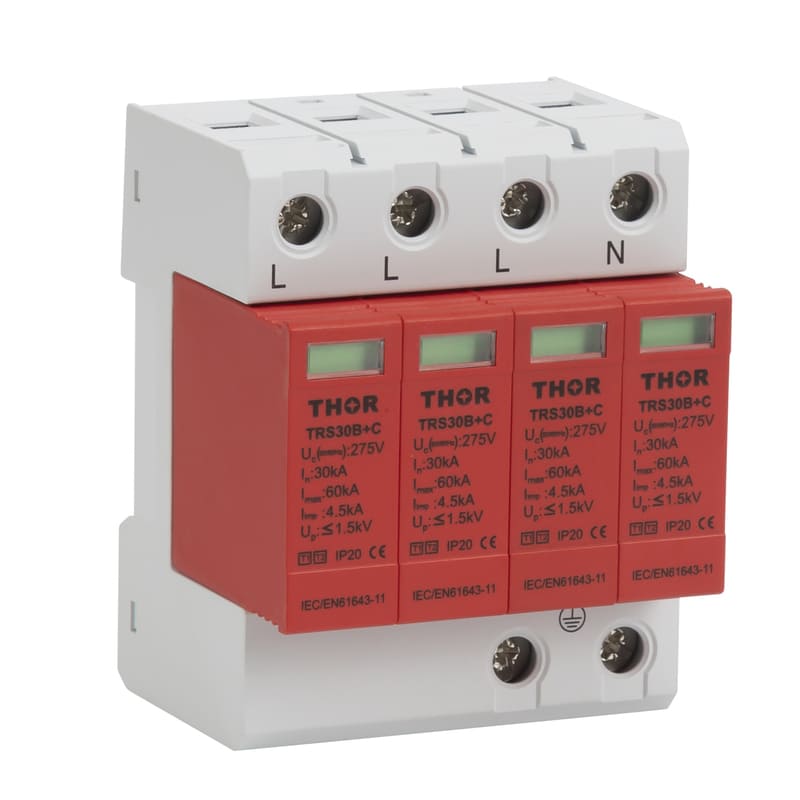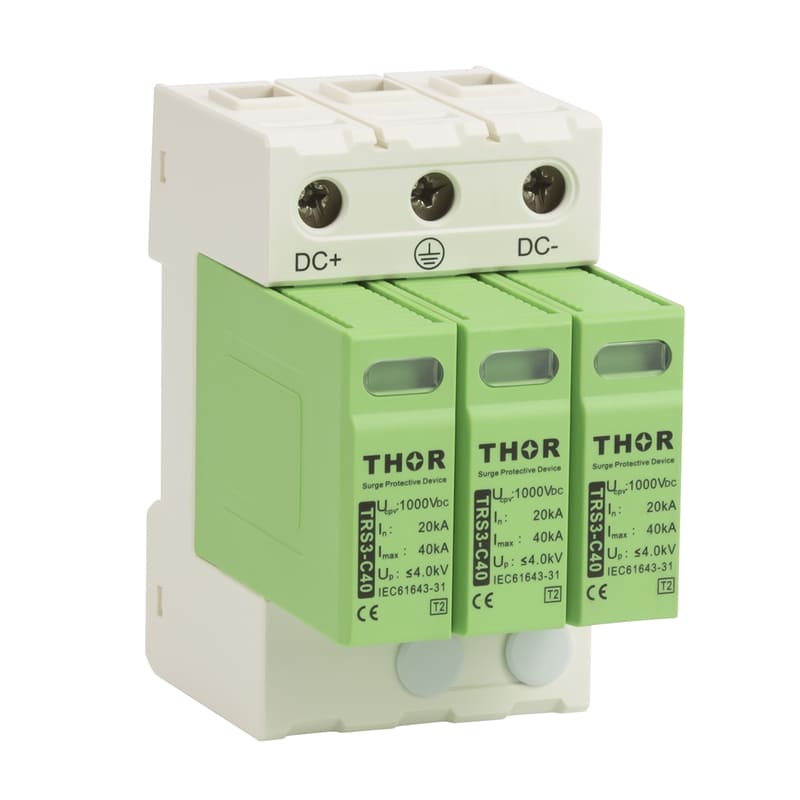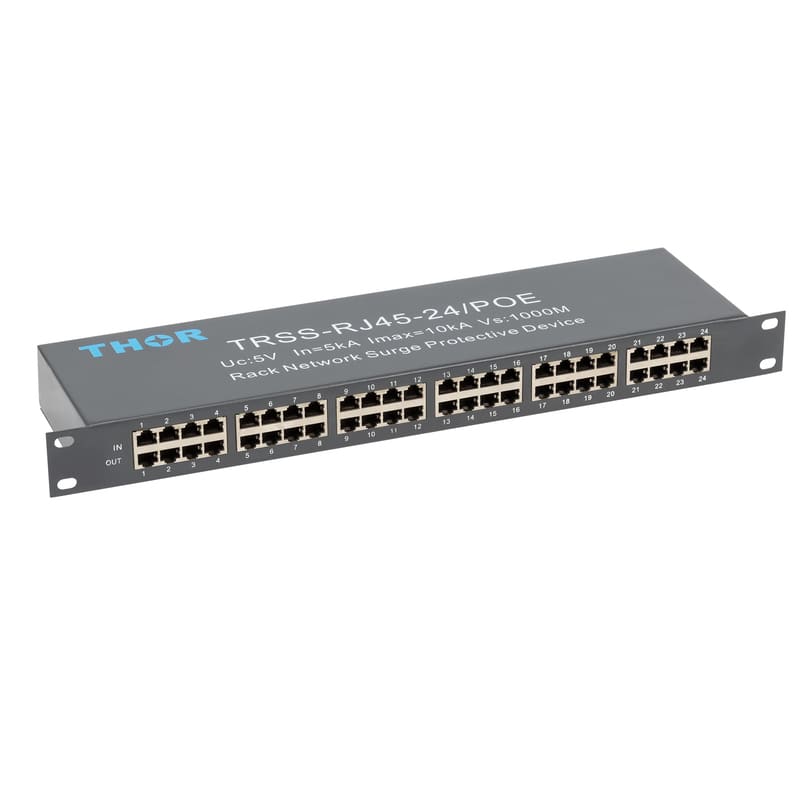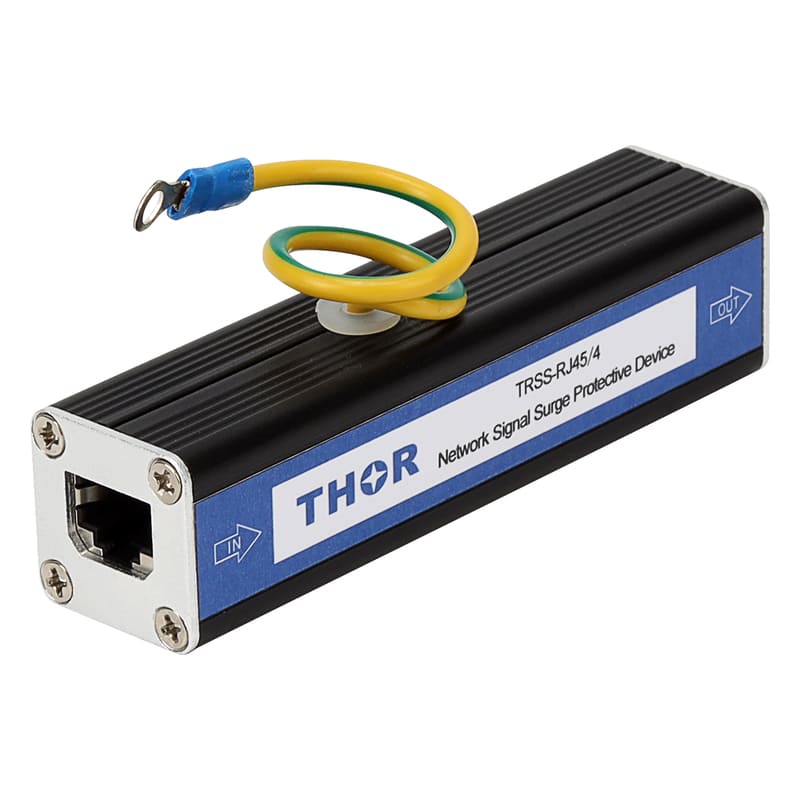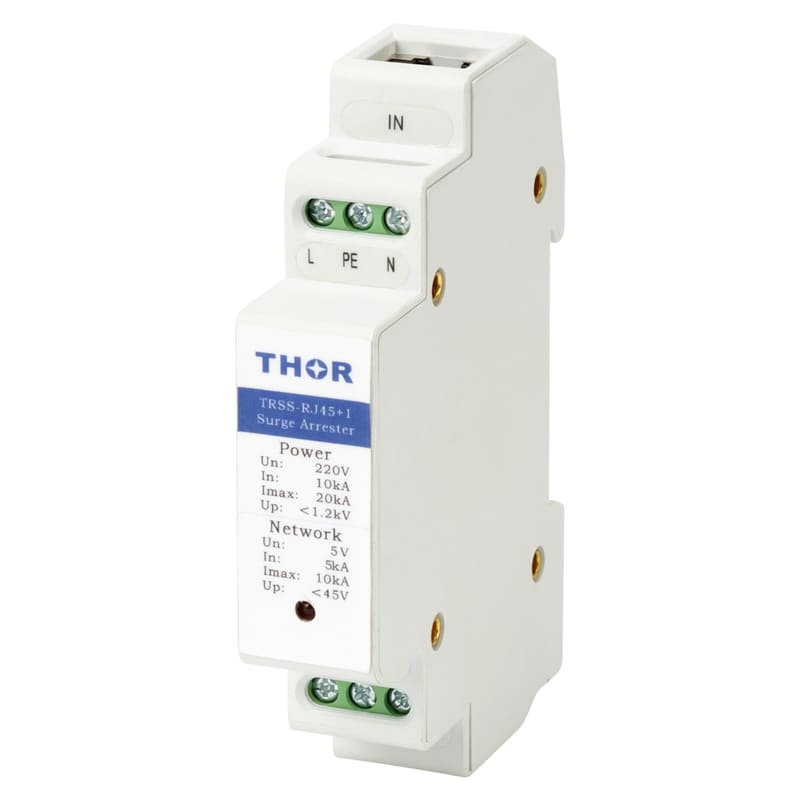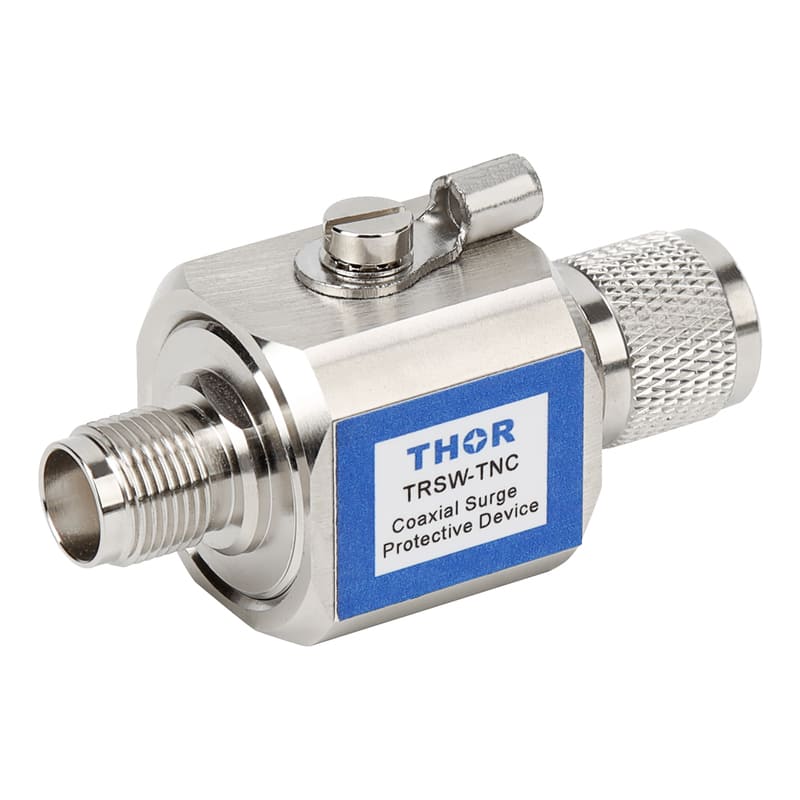Lightning current classification
Usually, the investment payback period of a photovoltaic power generation device is 20 years. During the payback period, it should be ensured that the device is not damaged in order to generate stable green energy benefits. This article discusses the lightning protection design of medium-scale photovoltaic power generation devices. First understand the nature of the lightning current in order to choose a reasonable lightning protection device (surge protector).
The types of lightning current can be roughly divided into three categories:
One type is the direct lightning strike that directly enters the building, as shown in Figure 2-1;
The second is the electrostatic induction (or electromagnetic induction) that occurs near the building, which is called induction lightning, as shown in Figure 2-2;
The third is the entry of lightning waves from the photovoltaic generator installation wiring, which is similar in nature to the first category.
The above three lightning currents will cause damage to supporting buildings for photovoltaic power generation, photovoltaic power generation equipment and additional electronic equipment for photovoltaic installations. Cause overcurrent and overvoltage, so additional protection is required.
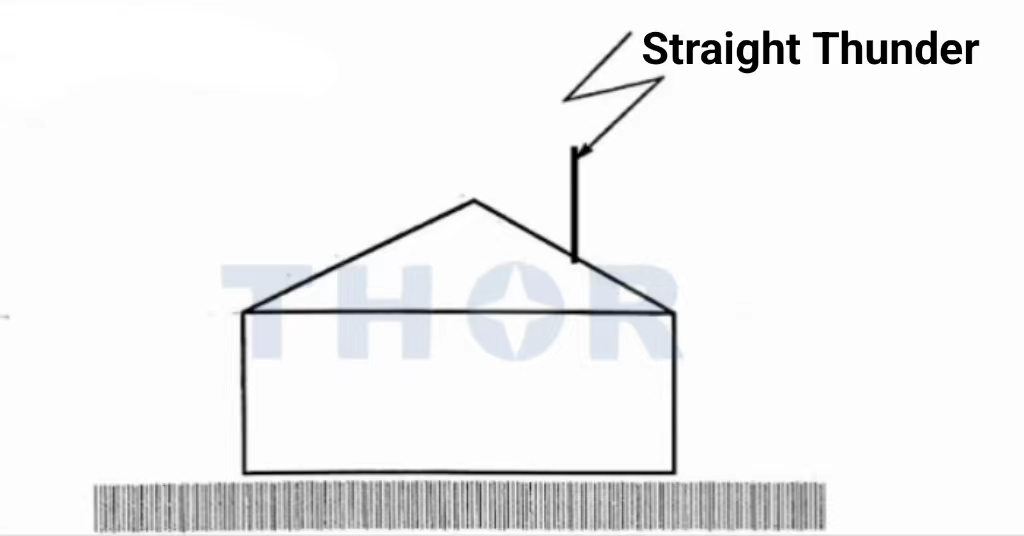
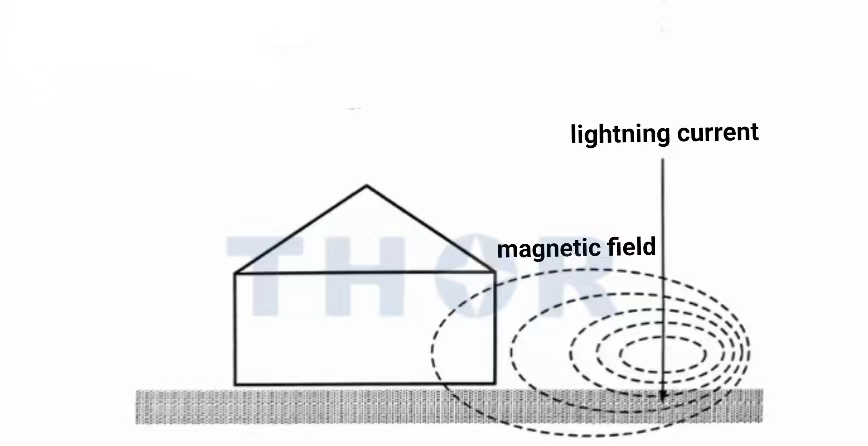
Figure 2-1 Direct lightning that directly enters a building Figure 2-2 Inductive lightning near a building
The different waveforms of direct lightning strikes are discussed below:
Direct lightning strikes directly entering from the user's lightning rod or directly intruding from the user's main distribution line
In this case, the amplitude of the lightning current pulse is extremely large, so its harm is also great, and there is
It may damage the insulation of the user's equipment and burn out the equipment, but the frequency of such direct lightning strikes is not high. For this reason, the IEC (International Electrotechnical Commission) stipulates that the waveform of direct lightning strikes should be 10 μs for the arrival time of the wave head, and 350 μs for the time extending to the wave tail (the high amplitude of the lightning current wave decays to half). The standard waveform determined by IEC (International Electrotechnical Commission) statistics is 10/350μs.
Electromagnetic induction lightning generated near the user
The magnetic field generated by the lightning current is coupled with the loop part of the circuit in the equipment to generate overvoltage due to electromagnetic induction. The flowing current is called induced lightning current, and the damage caused by this type of induced current is only about 1/10 compared with direct lightning strike due to its small energy. Even so, it should not be underestimated because of its high frequency of occurrence and wide range of influence. The waveform of induced lightning current is different from that of direct lightning strike, which is set to 8/20μs. The difference between this waveform and the direct lightning strike is that the arrival time of the wave height is close, but the attenuation is relatively fast, only 20μs.
Photovoltaic power generation device struck by lightning
If the photovoltaic power generation device is struck by lightning as a whole, it should be considered in two parts.
One is the current part of the front-end photovoltaic cell array,
The second is the terminal equipment part (rectifier, inverter, transformer, etc.),
The equipment at the end has the least damage due to the low lightning current energy. Generally, the overvoltage waveform is set to 1.2/50μs, and the overcurrent waveform is set to 8/20μs.

